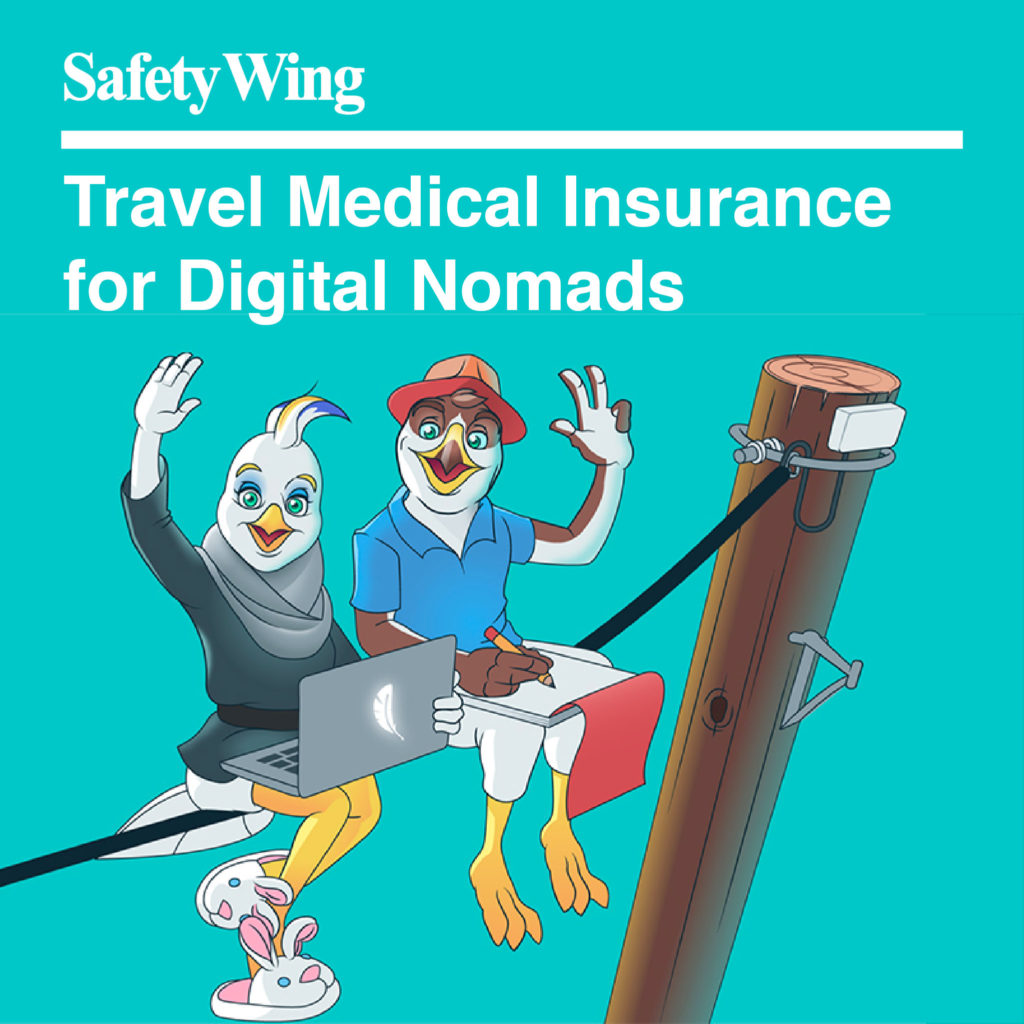The Best Platforms to Find Remote Freelance Work
Remote working seems like the ultimate dream job, but it’s not always a walk in the park. Especially for freelancers, work can either be feast or famine. When one job ends, the search to find new remote freelance gigs begins. It’s a cycle that never stops, and navigating to avoid the scams can be frustrating. Thankfully, we’ve come up with the best websites to search for legitimate, freelancing gigs to make the task easier.
If it’s remote employment you’re looking for, read our guide on the 7 best job boards to find remote work.
Finding the best remote freelance platforms
Whether you’re a newbie or a veteran, you’re sure to hit gold with any of the following websites and find the best Remote Freelance Platforms for you:
Flexjobs, curated remote freelance jobs
There is a reason why this website is often promoted by freelance bloggers. Established in 2007, Flexjobs markets itself as a scam-free job search website created especially for flexible workers.
The platform’s job posts are handpicked by the website’s staff from various job boards, blogs, and employer sites that exist on the net. The staff evaluates each job listing and researches the requirements to provide you a way to apply directly to the employer. In addition, the website offers tools, articles, and other resources to help you improve the job search.

Membership fees at Flexjobs
With its curated nature, the website does not come for free. Membership fees depend on your subscription period. You could choose to try it out with either a $14.95 monthly job subscription or an annual subscription of $49.95. If you wish long-term access to Flexjobs, the annual plan will give you a better deal.
Best For: People who want to work from home and want help finding jobs. If you need (or want) a flexible job due to frequent relocation, Flexjobs is a good choice. It’s also great for those who desire flexible hours for their kids or families.
Unique Features: Company profiles and reviews, email notifications, discounted consultations with career coaches, customized job search.
What’s Great: Reasonable rates, scam-free listings, helpful job tips, money-back guarantee, and user-friendly interface
What’s Not: Limited opportunities for non-US workers, the monthly fees, emphasis on IT and technology-related services
The Verdict: Flexjobs is a reliable and legitimate freelancing platform for US citizens and US-based freelancers. Though the monthly fees might hurt a little bit, it lessens the competition and provides you access to genuine job openings.
The offerings might be limited for non-common industries, so it’s best to run a trial search on the website to check out your opportunities before fully investing in Flexjobs’ plans.
99 Designs, for freelance designers
99designs is a freelancer platform born in an online forum in 2008. As its name suggests, the website focuses on providing professional design services via design briefs and online contests. Its headquarters is located in Melbourne, Australia, but the group also has offices in the US and Europe.
It’s free to sign-up on 99designs. Once you register, the platform reviews your portfolio and determines your Designer Level. You can then start participating in the design contests or applying for the 1-on-1 personal projects and get hired by clients.
The great thing about 99designs is that you can dictate your own rates and you get paid up-front. Once you start earning, the platform starts charging you a commission fee that can range from 5 to 15%, depending on your designer level.
If you want to brush up on your design skills, take some courses online, like the Graphic Design Masterclass on Udemy or the very extensive Become a Graphic Designer Module on Linkedin Learning.

There is always risk involved with design contests
The risk of not getting paid, however, runs high on this platform. Like any other design contest, the only thing that you can get from a loss is experience and another portfolio piece. Potential clients can’t interview you as well over the website, so your chance of bagging a gig relies solely on the strength of your portfolio.
Nevertheless, this website offers numerous opportunities and pays legitimate income to exceptional designers, so it’s worth trying your luck here.
Best For: Graphic designers of all levels and backgrounds.
Unique Features: numerous design contests, easy file management, clear design briefs, and various design categories.
What’s Great: the fact that you can dictate your own rates, it’s free to sign-up, and the chance to grow your portfolio onsite through the various design contests.
What’s Not: The $100 introduction fee charged on your first project, the tough competition, the risk of not winning and not getting paid for your work.
The Verdict: This platform is worth trying out if you’re a newbie designer looking to land your first gig or trying to build your portfolio. More seasoned designers might get turned off by the possibility of not getting paid for contest entries though.
Despite this, the website is a legitimate platform where designers can build names for themselves and get noticed by clients looking to hire for the long-term. It’s a great website to work on if your work stands out from the norm and you’re comfortable working on a per-project basis.
Upwork, the classic platform for remote freelance work
Upwork is one of the websites that started it all and still one of the best remote freelance platforms. Its roots were already planted as early as 1999 when its parent company Elance was formed. In 2013, Elance merged with its rival oDesk and rebranded itself as Elance-oDesk. Finally, in 2015, the merger was upgraded and renamed as Upwork Global Inc.

Upwork caters to multiple industries. Freelancers can apply simultaneously to jobs from unrelated fields, such as Web Design and Accounting. Applicants bid for jobs base on their “connects,” or points that can be bought on the website.
As you score and complete jobs, your clients can choose to leave feedback on your page, building your reputation on the website. Clients can also send you offers to apply for their job posts, and getting a job through this method will not cost you any connects. Jobs are offered either on a fixed rate or an hourly-based fee.
Generally speaking, Upwork deducts a 20% commission fee from your earnings, which is pretty high compared to other remote freelancing websites. This rate lowers over time though if you maintain a long-term relationship with your client and earn more than $500 off continuous gigs.
Lower fees for long-term cooperation
Because of this, Upwork has become quite appealing to remote freelancers with long-term clients as the website allows them to earn more over time. Due to its popularity though, the platform has a stringent screening process for new freelancers who want to create their account on the website.
Signing up is free, but the platform can delete your account if you aren’t winning any jobs, are inactive for some time, or just working in an industry that has too many existing freelancers on the website.
Best for: Freelancers who are interested in working for various industries, who have minimal to multiple job experiences online, who are open to working for employers abroad, and who intend to work with long-term clients.
Unique Features: the capacity to apply for work across various industries, invitations to interview, bonus earnings and tailored job recommendations delivered to your email.
What’s Great: Numerous job posts onsite, payment verification for clients, long-term clients, online assistance with disputes and mediation, local communities and seminars.
What’s Not: The high commission fees, the new fees on connects, your lottery-like chances of winning in some jobs, occasional outages of the website, stringent screening process for newbies.
The Verdict: Upwork is the website to go if you want a platform that has been tried and tested over the years. Though you might encounter several penny-pinching and unprofessional clients on the website, you can always ask assistance online to smooth out disputes. Upwork has become very competitive by now and there are courses that help you become successful on Upwork
The website generally charges more from freelancers, but it’s because they can afford to lose newbies and give serious talent more chances of winning jobs. Try this out if you don’t mind losing some money at the start to potentially earn a serious income with remote freelance work in the long run.
Freelancer, a good start to working remotely as a freelancer
Founded in 2009, Freelancer is a global, multi-industry platform that offers job posts for almost every job imaginable. Similar to Upwork’s structure, Freelancer allows registered users to bid on different job posts on the website. The website also hosts online contests for designers, where one can submit an entry to a design brief and earn money if his or her design gets picked.
Freelancer allows people to sign up for free. The platform charges a 10% fee for hourly projects and 10% or $5 for fixed-price projects, whichever amount is higher. The rate doesn’t change even if you work continuously with a client.
If you refer a client to the platform, Freelancer will not charge you at all for all work rendered with that client. In addition, the website hosts the Preferred Freelancer Program, which provides you with daily invitations, exclusive access to large projects, and a specialized payment plan.
True to its name, the platform offers a great starting point for new remote freelancers looking to make their name in the market. The website specializes in short-term and low-priced projects, but several jobs can still lead to long-term relationships with international clients.
Best For: Remote freelancers who are just starting out in the global market, who want to pay less fees for short-term work, who have a unique set of skills.
Unique Features: the Preferred Freelancer Program, access to both work bids and design contests, access to local, onsite jobs.
What’s Great: the low commission fees, free and easy joining process, local community support and numerous active job postings.
What’s Not: less stringent screening process of clients may expose you to more scammers, no reward for long-term relationships with clients, some cases of project fund reversals.
The Verdict: Freelancer.com is great when you’re just starting out doing remote freelance work online. While the website has its share of scammers and faulty payment schemes, it is also commended for its low commission rates and high rate of job post activity.
This platform is legitimate and is worth trying out if you aren’t keen on going through Upwork’s stringent screening process. It offers a higher earning capacity for short-term projects but may not be the best option for those looking for long-term clients.
Fiverr, starting small with remote freelance gigs
Founded in 2010, Fiverr was born out of the concept that freelancers are sellers. That is, they are selling their talents for a certain minimum fee. The website started offering gigs that sell for $5; hence its name.
Nowadays, however, Fiverr allows freelancers to upgrade their rates beyond the minimum $5 rate, and freelancers can earn as much as thousands of dollars every month. The road towards high earnings, however, isn’t easy.

The website caters to various industries, which include graphics, writing, music, video, and engineering works. While most newbies start with $5 per gig, the rates can increase as you build your reputation and positive feedback over time.
The great thing about this website is that it allows freelancers to market themselves creatively. If you are able to present yourself in an eye-catching and unique way (for example through an easy showcase made with Invideo) you can land multiple gigs at one time.
Signing up on Fiverr is completely free. Once you get hired for a gig, Fiverr takes 20% of your earnings or $1 for every $5 that you make. The rate is flat for all kinds of work. That means if you earn an amassed $1,000 on your gigs, you still pay Fiverr 20% in terms of commission.
Fiverr has met criticism in the past because it marketed design as a cheap commodity that costs as little as $5. The website, however, allows you to provide additional services that can increase your initial rate.
You can also upgrade your fees if you are able to improve your seller level and complete a certain number of orders successfully. Many freelancers have found success with this unique platform and have made Fiverr their primary source of remote freelancing gigs.
Best For: Freelancers who can market their skills creatively, who don’t mind starting out at an initial rate of $5 per gig, who have a unique set of simple but handy skills, who want to earn income on the side.
Unique Features: Video Marketing and Customizable gig packages.
What’s Great: Frequent gigs, Buyer tips, Bid-free work with guaranteed payments.
What’s Not: 20% flat commission rate of Fiverr, low starting fees, underpayment of work
The Verdict: Fiverr is great for freelancers looking to earn income on the side or trying to build their portfolio. It might not be your best avenue if you’re just starting to make remote freelance work your primary source of income. Like on upwork, Fiverr has become quite crowded and it can be hard to stand out. Again, there are courses that show you how to be more successful on Fiverr.
As your earnings will be dictated on the frequency and the success of your gigs, you need to be able to market yourself well on the website. This platform, however, eliminates the lottery-like chances of getting a job and can actually provide you numerous jobs at a single time.
Besides your industry-related skills, your chances of earning big on Fiverr is pretty much dependent on your marketing and business acumen.
Toptal, high-level remote freelance work
Founded in 2010, Toptal is short for “Top Talent.” It markets itself as offering the top 3% of freelance talent. To join the platform, interested applicants have to go through a rigorous screening process that involves an online interview, a time-pressured exam, and a sample project assignment.
It isn’t easy to become a freelancer on this website, but if you do manage to get in, you can take pride in knowing that you’re the cream of the crop and your talent is recognized by one of the best remote freelance platforms.
Toptal offers work in five categories: Developers, Designers, Finance, Project Managers and Product Managers. All industries require freelancers who have numerous years of work experience, education and accolades to back it up.
This might scare some freelancers away, but those who do get in say that they get to work with some of the best international companies. In addition, they get to dictate their rates and work schedule. In short, the process of getting into Toptal is as challenging as it can get, but the rewards are worth the effort. Besides, wouldn’t you like to become part of the “Top 3% of Freelance Talent”?

Best For: Freelancers with years of job experience and solid education in their background.
Unique Features: Toptal blog and community, Professional profile editors and recruiters.
What’s Great: High-income rates, flexible working hours, exposure to premiere clients.
What’s Not: Fewer projects compared to other freelancing websites, Difficulty in adjusting existing rates, Competition against highly skilled and experienced talent.
The Verdict: This website is perfect for you if you have years of solid experience in your chosen field and you are up to the challenge of going through their five-step application process. This platform doesn’t really cater to newbies in their fields. It’s great for someone who has years of work experience in a reputable company and looking to make the jump to remote freelance work.
In Summary
Overall, there are various freelancing websites available on the internet today. While some may cater to scammers and bogus job offers, many have proven their legitimacy and reliability over the years. There isn’t one platform that dominates over the rest.
If you want to thrive in freelancing, you should check out the features, benefits, and limitations of the platforms you are interested in. Choose one that is most suited to your skills, job experience, and needs.
You can also choose to try out different websites at the same time, but consider that each platform has its own rates and standards that you have to abide by. Considering that you have to “grow” on every platform, it might be best to stick to one platform.
We’ve given you a list of the best remote freelance platforms. With all these in mind, are you ready to apply and start earning on any of these freelancer websites?



